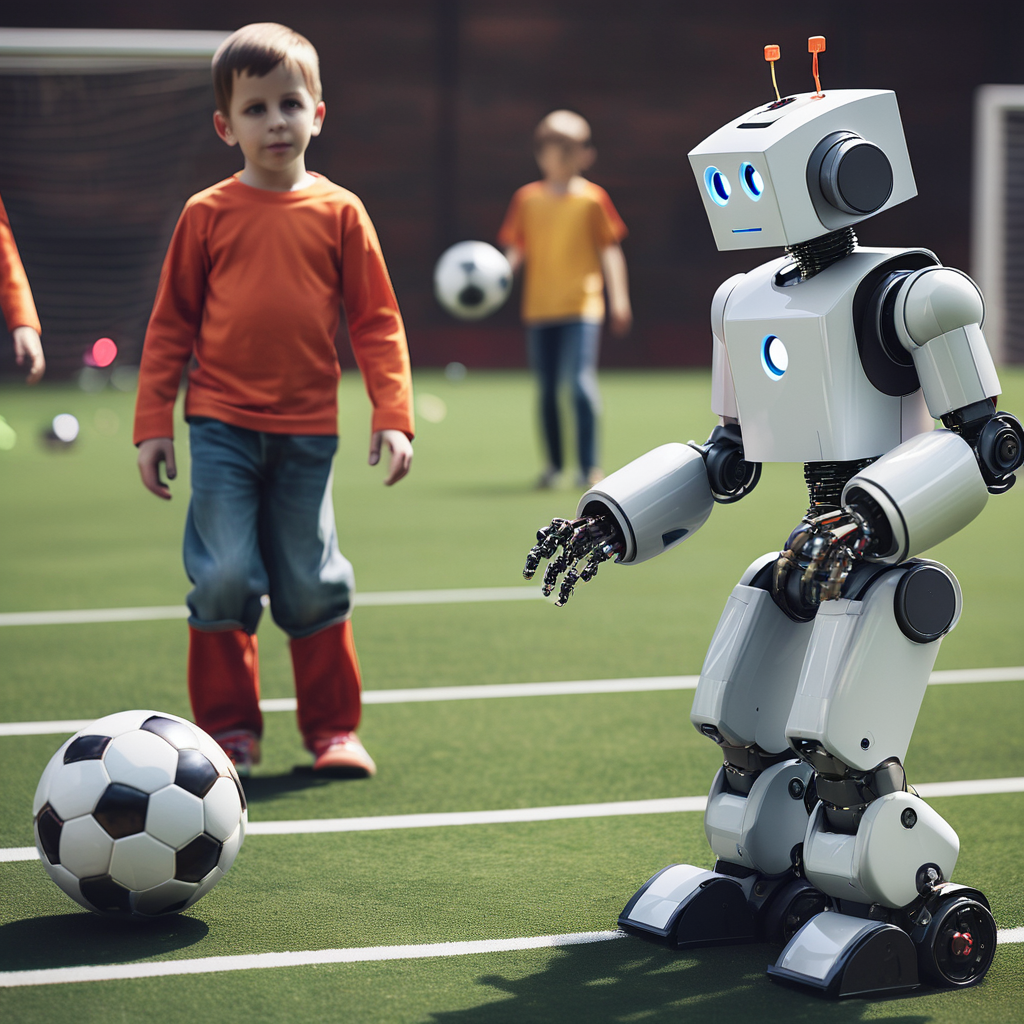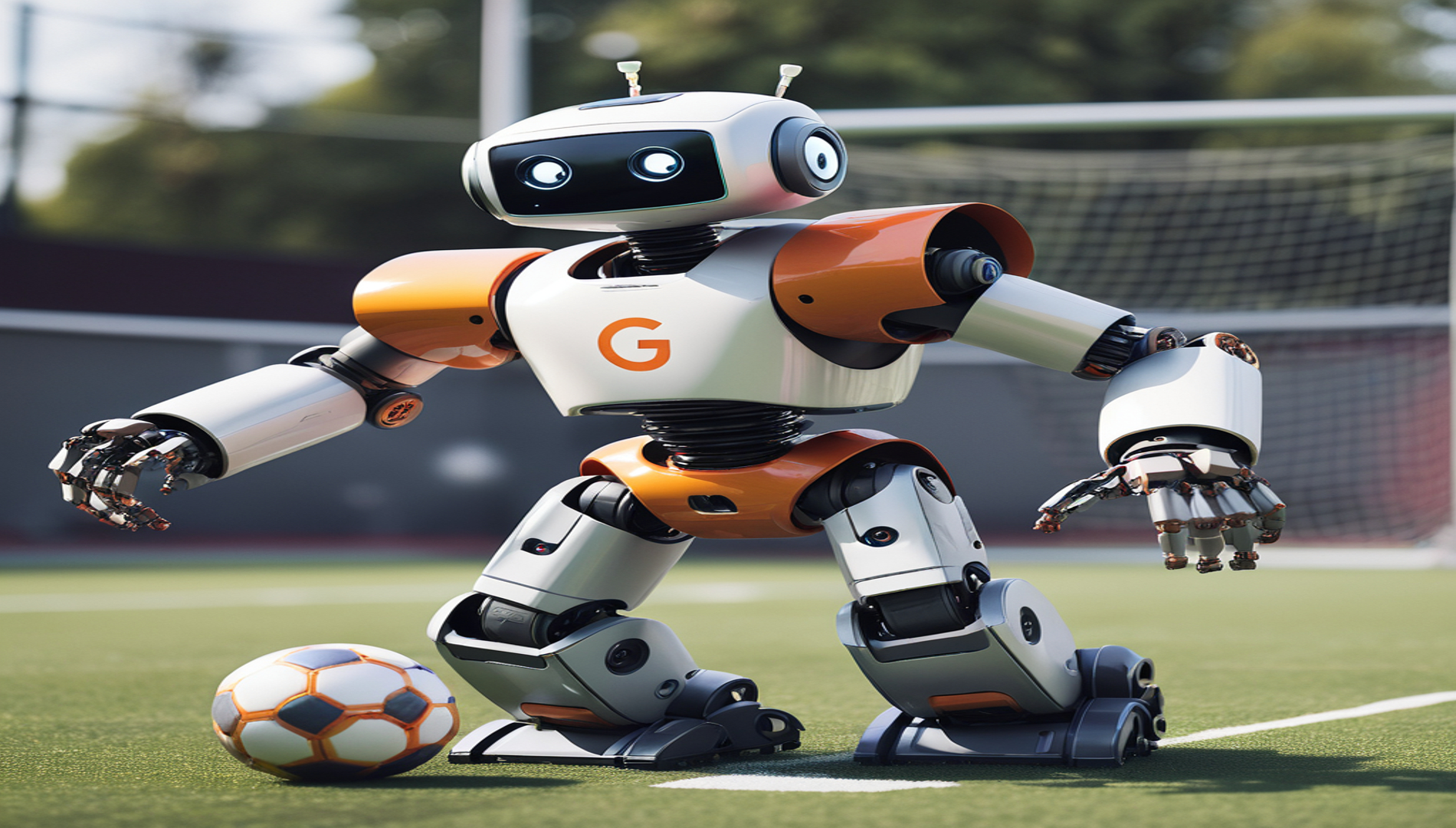Overview:
Google’s artificial intelligence team has made significant progress in the field of robotics and artificial intelligence by teaching robots how to play football. Along with pushing the envelope of what robots can accomplish this creative project creates new opportunities for the application of AI to entertainment and sports training.
The Project Origin: The initiative started out as a test project to see if artificial intelligence could be used for physical tasks in dynamic unpredictable environments. Football offered a difficult but perfect environment for testing the limits of robotic agility and AI responsiveness because of its intricate rules constant player movements and quick gameplay changes.
How We Trained the Robots:
Mobility and Physical Design: The bipedal structures of the robots created for this project were modeled after the human form providing them flexibility and balance. To increase their speed and agility each robot was constructed with sophisticated servomotors.
Sensory Integration: The robots were equipped with multiple sensors that enabled them to sense their environment, which helped them play football efficiently. These comprised cameras LIDAR and ultrasonic sensors for real-time spatial and visual data collection.
Automated Learning Systems: With the help of Google’s AI team and a complex machine learning framework called reinforcement learning robots were able to learn the best movements and tactics by repeatedly practicing football drills. In order to sharpen their decision-making and ball-handling abilities they practiced in a simulated environment that could quickly iterate through various game scenarios.
Human-Robot Communication: To enable effective communication and teamwork between human and robotic players on the field the team also implemented human-robot interaction techniques. This included anticipatory movements based on human players actions and gesture recognition.
Challenges Faced: It wasn’t easy to teach robots how to play football. Because the game is unpredictable AI models that are highly responsive and adaptable are necessary. In order for the robots to survive the rigours of a real game physical durability also needed to be guaranteed.

Application and Implications:
Sports Analysis and Training: In order to help athletes improve their skills robots could be utilized as constant devoted training partners. AI-driven analysis provides insights into opponent weaknesses and game tactics and they can also be useful in strategic training.
Amusement: Robotic football games have the potential to become a new kind of entertainment drawing sports and tech enthusiasts alike. Additionally this might result in brand-new tournaments that match human teams against robotic ones.
Investigation and Creation: Our understanding of what is feasible in terms of robot mobility perception and autonomous decision-making is advanced by the project which makes a substantial contribution to robotics and artificial intelligence research.
In Conclusion: A major turning point in the history of technology and sports has been reached by Google’s attempt to teach robots to play football. Although the main objective was to improve robotics and AI the possible uses could completely change how we perceive and use technology. The prospect of robots engaging in human activities is becoming more real as this field develops raising the prospect of fascinating future discoveries.
Lastly, some reflections. The Google AI team has just begun to achieve greatness. With the ongoing advancements in the AI and robotics it appears inevitable that these technologies will become even more integrated into different facets of daily life and industry. In addition to showcasing the potential of contemporary AI this project lets in more breakthroughs that have the potential to completely change the world.

Leave a Reply